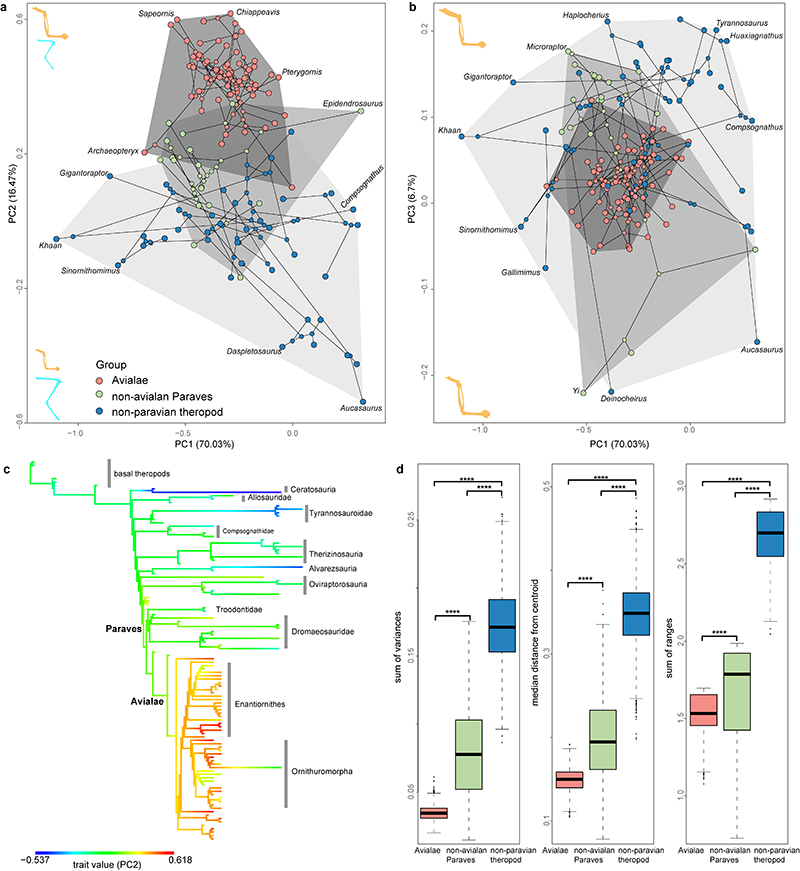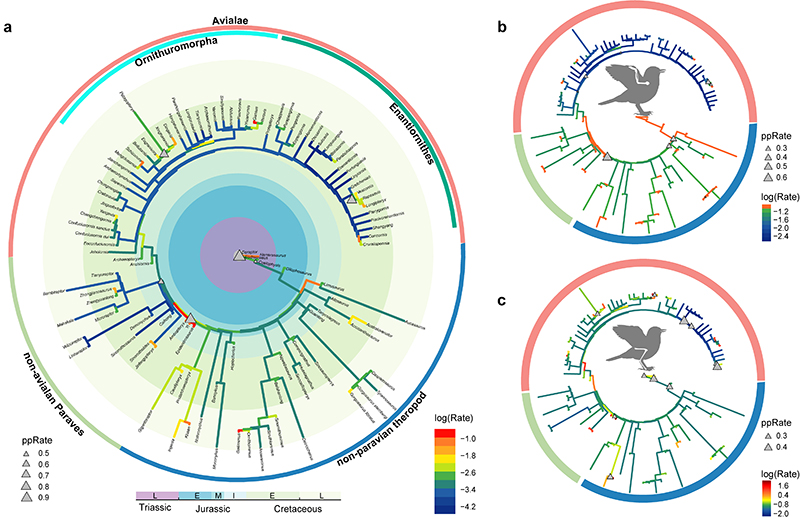| Location: Home > Research > Research Progress |
| Scientists expand understanding of limb evolution in earliest birds |
|
The assembly of the volant bird body plan from the ancestral bulky dinosaurian condition is an enduring topic of evolutionary biology. The body plan of volant birds demonstrates a pronounced decrease in body size and proportionate elongation of the forelimbs. Given the scaling relationship between limb and body size, changes to the former were likely clouded by changes to the entire body size. Since changes to individual limb elements provides the direct basis for natural selection, they are essential to comprehending branch- and lineage-specific evolutionary patterns across the transition from terrestrial to volant theropods. Nevertheless, few studies have explicitly explored the evolutionary path of the characteristic avialan limb configuration in its earliest history. Now, however, paleontologists from the Institute of Vertebrate Paleontology and Paleoanthropology (IVPP) of the Chinese Academy of Sciences have reported a detailed scientific study of limb size evolution across the theropod-bird transition. The study was published in Nature Ecology & Evolution on June 5. By quantifying morphological disparity and the evolutionary rate, the researchers discovered a shift to low disparity and a decelerated evolutionary rate near the origin of birds. This contrasts with the traditional wisdom that an evolutionary innovation such as powered flight would trigger and accelerate the evolutionary rate. This comparative, statistical analysis indicates that the decelerated evolutionary rate may be largely ascribed to the low disparity and low rate of forelimb evolution. "We believe that forelimb evolution has been constrained to the basic 'blueprint' needed for powered flight, and thus the morphospace that can be realized by early diverging avialans was limited," said Dr. WANG Min, the lead and corresponding author of this study. The acquisition of derived flight-relevant musculoskeletal features by crownward taxa may have broken the limb proportion constraint and thus ultimately contributed to the enormous forelimb disparity seen in extant birds. According to Dr. ZHOU Zhonghe, co-author of the study, "Our analyses reveal that avialan-like limb proportions were established earlier in forelimbs than in hindlimbs in theropod history, supporting the 'pectoral early-pelvic late' hypothesis." The recovered patterns of disparity and rate of appendicular limb evolution demonstrate how the early avialan bauplan was shaped deeply by natural selection driven by powered flight. Link: https://www.nature.com/articles/s41559-023-02091-z
Fig. 1 Morphological disparity of forelimbs and hindlimbs of Mesozoic theropods (including birds). (Image by WANG Min)
Fig. 2 Evolutionary rate and rate shift of forelimb and hindlimb elements of Mesozoic theropods (including birds). (Image by WANG Min) |

